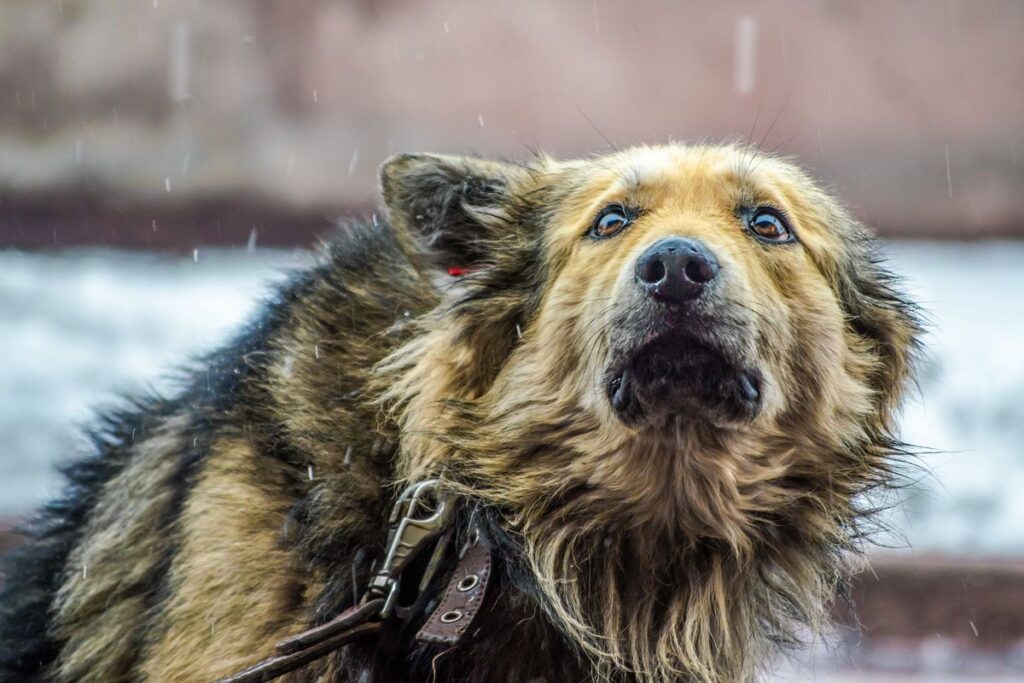As a certified professional dog trainer, I’ve come to realize that while dogs can’t talk, they sure have a lot to say if we just know how to listen. Understanding canine behavior is essential for ensuring the safety and well-being of both myself and my dog. Over the years, I’ve realized how crucial it is to recognize the subtle signs that dogs use to communicate, particularly when it comes to unfamiliar dogs. These situations can be unpredictable, and being able to spot the red flags in a dog’s body language has helped me avoid potentially dangerous encounters.
Through my experience at Zoom Room Dog Training, I’ve gained valuable insights into how dogs communicate their emotional state. By paying attention to details like ear position and overall movement, I’ve become more confident in navigating interactions with unfamiliar dogs. This awareness has not only made me a more responsible dog owner but also helped create a safer environment for everyone involved. Understanding dog body language is crucial not only for interpreting your own dog’s emotions but also for assessing the intentions of other dogs. Here’s a breakdown of key signs to watch for.
Before Looking for Red Flags, Use Caution Around Any Unfamiliar Dog
While certain canine breed characteristics can be generalized, it’s crucial to remember that every dog is unique. Each dog has its own genetic makeup, personality, history, and emotional reactions, whether influenced by nature or nurture. For example, while Golden Retrievers are typically seen as affectionate and good with children, not all Goldens fit this mold. In fact, some may be more reactive or even aggressive.
The key takeaway is that while breed tendencies can provide a general understanding, it’s essential to approach each dog as an individual. Regardless of breed, any dog can exhibit aggressive behavior, especially if influenced by unknown factors or stressors.
Also, when encountering an unfamiliar dog, it’s essential to be cautious. Dogs are animals with teeth, and their emotional state can be influenced by many factors, often unknown to you. Understanding this can help you avoid potential dangers and ensure safer interactions.
RELATED: Avoid these 8 dog owner mistakes!
Red Flag 1: Ear Position
Shutterstock
Ears held forward can indicate the dog is alert or interested, while ears pulled back may signal fear, anxiety, or submission. Flattened ears suggest high stress, fear, or submission.
Red Flag 2: Tail Position/Movement
A neutral tail position with wagging typically means the dog is happy, friendly, or excited. A low tail position with slow wagging can show insecurity or uncertainty, while a high tail position with stiff wagging may indicate a threat or impending aggression. If the tail is tucked between the legs, the dog is likely fearful, anxious, or submissive.
Red Flag 3: Facial Expressions: Eyes
Shutterstock
Soft, blinking eyes suggest a relaxed and comfortable dog. A wide, direct stare may be challenging or threatening, while “whale eye,” where the whites of the eyes are visible, indicates fear or anxiety.
Red Flag 4: Mouth
Shutterstock
A relaxed, slightly open mouth shows calm and comfort. If the lips are closed and taut, the dog may be stressed or uncomfortable. Raised lips showing teeth are a warning sign of aggression, and while panting is normal when hot, excessive panting can indicate stress.
Red Flag 5: Tongue
Shutterstock
Licking the lips is a common sign that the dog is anxious or unsure.
Red Flag 6: Body Posture
Shutterstock
A neutral, relaxed stance signals a calm and confident dog. If the body is forward with tensed muscles, the dog is highly alert, possibly in response to prey or as a threat. Cowering shows fear, submission, or stress, while rolling over to show the belly can be a sign of submission or a request for attention, depending on the context.
Red Flag 7: Overall Movement
Shutterstock
A slow approach indicates caution or uncertainty, whereas bouncing or a play bow is an invitation to play and shows friendliness. If the dog suddenly freezes, it could be fearful, assessing a situation, or preparing to react defensively. Backing away or cowering typically reflects fear.
Red Flag 8: Vocalizations

Vocalizations such as growling or barking, especially if low and continuous, indicate that the dog feels threatened or defensive. This is a clear warning that the dog is uncomfortable and may bite if further provoked.
Red Flag 9: Raised Hackles
Shutterstock
Raised hackles, where the fur along a dog’s back and neck stands up, is a sign of arousal. While this doesn’t always mean aggression, it indicates that the dog is on high alert and could be feeling stressed, anxious, or fearful.
Red Flag 10: Staring or Avoiding Eye Contact
Shutterstock
A hard, direct stare can be a challenge or a sign that a dog feels threatened, while a dog that avoids eye contact altogether may be anxious or fearful. Both extremes can indicate that the dog is uncomfortable.
Safety Tips for Dog Interactions
Shutterstock
To protect yourself and your dog, consider these safety tips:
Educate yourself on dog body language, including stress signals like lip licking or intentional avoidance. Respect a dog’s space, remembering that every dog has a “personal bubble” that can shrink or widen depending on its emotional state.
Learn to “Speak Dog”
Shutterstock
Be aware of your own body language and learn to “speak dog.” When dealing with unfamiliar dogs, avoid direct eye contact, as in the canine world, this can be seen as rude or even threatening. A simple head turn can diffuse tension. If you need to approach a dog, avoid walking directly toward it. Instead, approach in an arc, keeping calm and avoiding eye contact.
By following these guidelines, you’ll be better equipped to navigate interactions with unfamiliar dogs and ensure a safer environment for everyone involved.











